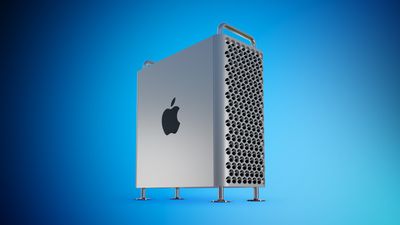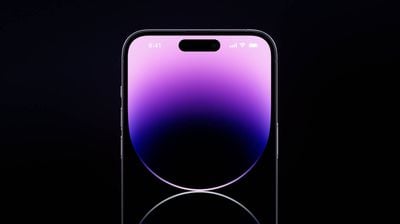The annual CES tech event kicks off this week, with all kinds of companies showing off new products that are going to launch throughout 2026. Unsurprisingly, AI is the theme of this year's show, and almost everything you can think of is getting an artificial intelligence upgrade.
We sent
MacRumors videographer Dan Barbera to CES to check out what's new, and our first video covers the CES Unveiled preview event that happens before the show begins, along with some new Samsung products.
Samsung is showing off its latest smartphone, the Galaxy Z TriFold. Instead of just folding in two like a book, it has three folds, so it goes from 6.5 inches when closed to 10 inches when opened up. With the extra fold, it looks and feels much more like a tablet, and there's a lot of screen real estate for multitasking, playing games, and watching content. When it's closed up, it's thick, but still pocketable.
Most of Samsung's other devices like TVs are getting iterative updates and AI support with the new Vision AI Companion. The AI can answer questions about content on the screen, provide recommendations on what to watch or listen to, suggest what to eat, and give recipes from food you see on TV. There are also intuitive AI modes to personalize the viewing experience, tweaking picture and sound controls.
Samsung debuted a 130-inch microRGB TV with its most impressive color spectrum to date, updated OLED Frame TVs with realistic art, a record player with an animated display, and Movingstyle displays that are meant to detach from a base so they can be taken around the home.
Samsung's smart home integration is getting an AI update that allows smart home products to be activated based on sleeping metrics collected by the Galaxy Watch. If the watch detects that the wearer is too hot, it can turn on the AC. Or if the room is dry, it's able to turn on a connected humidifier. For gamers, Samsung showed off new Odyssey gaming displays, including the 6K Odyssey G9.
There were multiple fun and unusual products at CES Unveiled, like the $8,500 4D Falcon Massage Chair from Bodyfriend. It looks like a mech suit chair hybrid device, and it offers custom massage profiles with built-in leg and arm stretching functionality. It includes zero gravity recline, hand acupressure pads, and 36 airbags.
The $120 Ostation from Olight is able to recharge up to 32 AA batteries at one time, testing to ensure they're functional. There's also a version for AAA batteries, and both are handy if you use a lot of these battery types.
LiberNovo was showing off the $930 Omni desk chair, a dynamic ergonomic chair that senses the curve of your back and adapts automatically to offer support. It includes an adaptive neckrest and movable armrests that shift when the user leans back.
Belkin has some useful new charging products, including a $65 Qi2.2 3-in-1 charging dock and a Qi2.2 power bank that has an extra magnet so you can still use wallets, grips, or stands. Qi2.2 charges devices at up to 25W, just like MagSafe.
The $500 HoverAir Drone is a compact drone with a built-in high-resolution camera and stabilization, so it's like having a tiny film crew for video recording. It has covered rotors, so it's safe to use indoors.
Withings debuted a next-generation $600 Body Scan scale that's able to measure more than 60 biomarkers. It monitors heart pumping efficiency, cellular health, and metabolic function with eight EKG-capable electrodes on the scale surface and four in a retractable handle.
CES Unveiled also included a bunch of AI companion robots like the Tombot, a lifelike robotic dog with interactive sensors, real puppy sounds, and voice control. It's meant to offer emotional support without the need for traditional pet care, but it's not available for purchase yet.
We'll be covering more CES highlights throughout the week, so make sure to stay tuned, and check out our CES 2026 hub for all of our coverage.
 Note: MacRumors is an affiliate partner with Amazon. When you click a link and make a purchase, we may receive a small payment, which helps us keep the site running.
Note: MacRumors is an affiliate partner with Amazon. When you click a link and make a purchase, we may receive a small payment, which helps us keep the site running.






















































